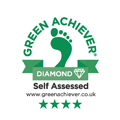HMRC is to introduce an additional test that will determine the flat rate percentage used by traders. It would seem that HMRC presently considers the benefits obtained by certain businesses to be excessive and not in accord with the intentions of Parliament.
Traders that meet the new definition of a “limited cost trader” will be required to use a fixed rate of 16.5%. This will include traders who are already using the FRS scheme, and many at rates lower than 16.5%.
From 1 April 2017, FRS traders who meet the following definitions will be considered “limited cost traders” and will be obliged to use a new 16.5% rate. A limited cost trader will be defined as one whose VAT inclusive expenditure on goods is either:
- less than 2% of their VAT inclusive turnover in a prescribed accounting period
- greater than 2% of their VAT inclusive turnover but less than £1,000 per annum if the prescribed accounting period is one year (if it is not one year, the figure is the relevant proportion of £1,000)
Goods, for the purposes of this measure, must be used exclusively for the purpose of the business but exclude the following items:
- capital expenditure
- food or drink for consumption by the flat rate business or its employees
- vehicles, vehicle parts and fuel (except where the business is one that carries out transport services – for example a taxi business – and uses its own or a leased vehicle to carry out those services)
Businesses using the FRS will be expected to ensure that, for each accounting period, they use the appropriate flat rate percentage.
VAT traders using the FRS should review their position before April 2017 to ensure that there are still advantages to using the scheme.









